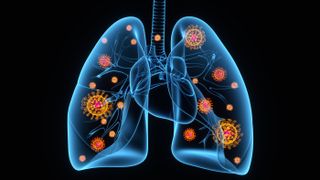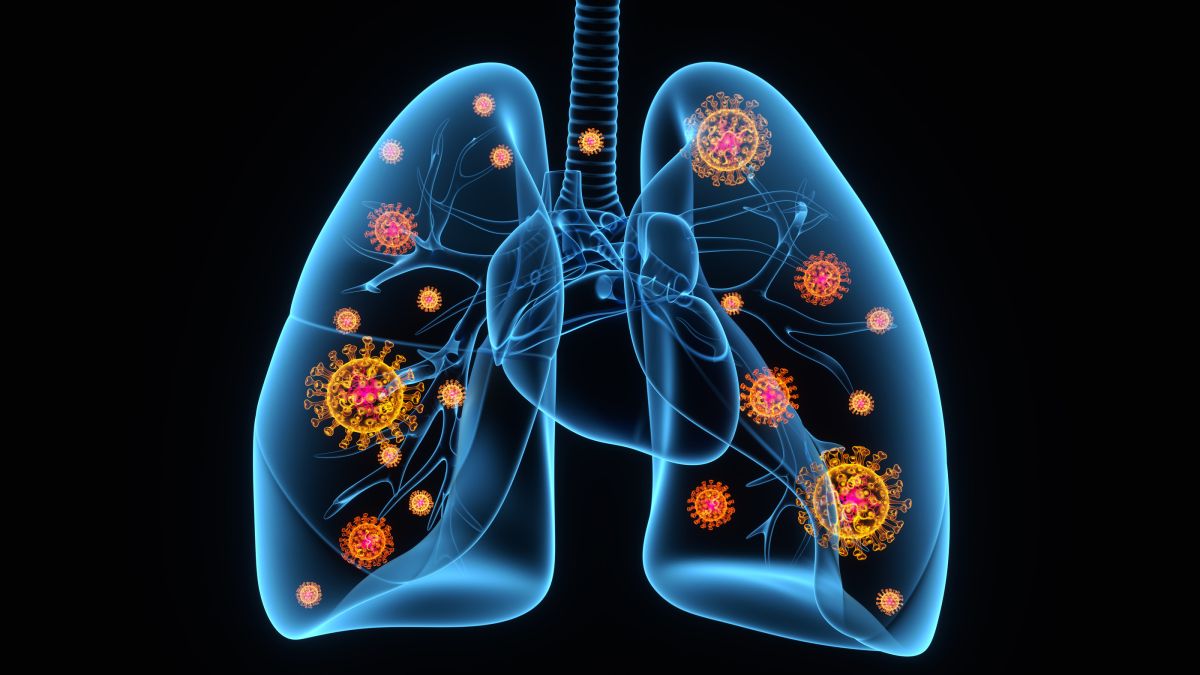
(Image: © xia yuan via Getty Images)
As doctors see more and more COVID-19 patients, they are noticing an odd trend: Patients whose blood oxygen saturation levels are exceedingly low but who are hardly gasping for breath.
These patients are quite sick, but their disease does not present like typical acute respiratory distress syndrome (ARDS), a type of lung failure known from the 2003 outbreak of the SARS coronavirus and other respiratory diseases. Their lungs are clearly not effectively oxygenating the blood, but these patients are alert and feeling relatively well, even as doctors debate whether to intubate them by placing a breathing tube down the throat.
The concern with this presentation, called “silent hypoxia,” is that patients are showing up to the hospital in worse health than they realize. But there might be a way to prevent that, according to a New York Times Op-Ed by emergency department physician Richard Levitan. If sick patients were given oxygen-monitoring devices called pulse oximeters to monitor their symptoms at home, they might be able to seek medical treatment sooner, and ultimately avoid the most invasive treatments.
Related: Are ventilators being overused on COVID-19 patients?
“This is not a new phenomenon,” said Dr. Marc Moss, the division head of Pulmonary Sciences and Critical Care Medicine at the University of Colorado Anschutz Medical Campus. There are other conditions in which patients are extremely low on oxygen but don’t feel any sense of suffocation or lack of air, Moss told Live Science. For example, some congenital heart defects cause circulation to bypass the lungs, meaning the blood is poorly oxygenated.
However, the increased understanding that people with COVID-19 may show up with these atypical coronavirus symptoms is changing the way doctors treat them.
Gasping for air
Normal blood-oxygen levels are around 97%, Moss said, and it becomes worrisome when the numbers drop below 90%. At levels below 90%, the brain may not get sufficient oxygen, and patients might start experiencing confusion, lethargy or other mental disruptions. As levels drop into the low 80s or below, the danger of damage to vital organs rises.
However, patients may not feel in as dire straits as they are. A lot of coronavirus patients show up at the hospital with oxygen saturations in the low 80s but look fairly comfortable and alert, said Dr. Astha Chichra, a critical care physician at Yale School of Medicine. They might be slightly short of breath, but not in proportion to the lack of oxygen they’re receiving.
There are three major reasons people feel a sense of dyspnea, or labored breathing, Moss said. One is something obstructing the airway, which is not an issue in COVID-19. Another is when carbon dioxide builds up in the blood. A good example of that phenomenon is during exercise: Increased metabolism means more carbon dioxide production, leading to heavy breathing to exhale all that CO2.
Related: Could genetics explain why some COVID-19 patients fare worse than others?
A third phenomenon, particularly important in respiratory disease, is decreased lung compliance. Lung compliance refers to the ease with which the lungs move in and out with each breath. In pneumonia and in ARDS, fluids in the lungs fill microscopic air sacs called alveoli, where oxygen from the air diffuses into the blood. As the lungs fill with fluid, they become more taut and stiffer, and the person’s chest and abdominal muscles must work harder to expand and contract the lungs in order to breathe.
This happens in severe COVID-19, too. But in some patients, the fluid buildup is not enough to make the lungs particularly stiff. Their oxygen levels may be low for an unknown reason that doesn’t involve fluid buildup — and one that doesn’t trigger the body’s need to gasp for breath.
Coronavirus science and news
Working to breathe
Exactly what is going on is yet unknown.
Chichra said that some of these patients might simply have fairly healthy lungs, and thus have the lung compliance (or elasticity) — so not much resistance in the lungs when a person inhales and exhales — to feel like they are not short on air even as their lungs become less effective at diffusing oxygen into the blood. Others, especially geriatric patients, might have comorbidities that mean they live with low oxygen levels regularly, so they’re used to feeling somewhat lethargic or easily winded, she said.
Related: 11 surprising facts about the respiratory system
In the New York Times Op-Ed on the phenomenon, Levitan wrote that the lack of gasping might be due to a particular phase of the lung failure caused by COVID-19. When the lung failure first starts, he wrote, the virus may attack the lung cells that make surfactant, a fatty substance in the alveoli, which reduces surface tension in the lungs, increasing their compliance. Without surfactant, the increased surface tension causes the alveoli to deflate, but if they are not filled with fluid,, they won’t feel stiff, Levitan wrote. This could explain how the alveoli fail to oxygenate the blood without the patient noticing the need to gasp for more air.
The virus might also create hypoxia by damaging the blood vessels that lead to the lungs, Moss said. Normally, when a patient has pneumonia, the tiny blood vessels around the fluid-filled areas of the lungs constrict (called hypoxic vasoconstriction): Sensing a lack of oxygen in the damaged areas, the body shunts blood to other, healthier parts of the lungs. Because pneumonia fills the lungs with fluid, the person will feel starved for air and gasp for breath. But their vessels send the blood to the least-damaged parts of the lung, so their blood oxygenation stays relatively high, given the damage.
In COVID-19, that balance may be off. The lungs aren’t very fluid-filled and stiff, but the blood vessels don’t constrict and reroute blood to the least-damaged spots. People feel free to inhale and exhale without resistance, but the blood is still trying to pick up oxygen at alveoli that are damaged and inefficient.
“What is most likely happening here is that hypoxic vasoconstriction is lost for some reason, so that blood does flow to places where there is some damage to the lungs,” Moss said. It could also be a combination of factors, he added.
“I’m not going to say the alveoli are normal and the surfactant is normal, but when someone has hypoxia out of proportion to what you would see in the lung, that makes lung specialists think there is a problem on the blood vessel side,” he said.
In the New York Times, Levitan suggests that patients who are not sick enough to be admitted to the hospital be given pulse oximeters, devices that clamp to the finger to measure blood oxygenation. If their oxygenation numbers start to fall, it could be an early warning sign to seek medical treatment.
“It’s an intriguing possibility,” Moss said.
Even without widespread at-home oxygen monitoring, doctors are now starting to differentiate between patients who have low oxygen levels and who are working hard to breathe, and those who have low oxygen levels but are breathing without distress, Chichra said. Early in the pandemic, knowing that COVID-19 patients can start to fail quickly, physicians tended to put people with hypoxia on ventilators quickly. Now, Chichra said, it’s becoming clear that patients who aren’t struggling for breath often recover without being intubated. They may do well with oxygen delivered via nasal tube or a non-rebreather mask, which fits over the face to deliver high concentrations of oxygen.
Hypoxic patients who are breathing quickly and laboriously, with elevated heart rates, tend to be the ones who need mechanical ventilation or non-invasive positive-pressure ventilation, Chichra said. The latter is a method that uses a face mask instead of a tube down the throat, but also uses pressure to push air into the lungs.
“The key difference we’ve found between these folks is that the people who are working hard to breathe are the folks who usually need to be intubated,” Chichra said.
- 13 coronavirus myths busted by science
- 11 (sometimes) deadly diseases that hopped across species
- 20 of the worst epidemics and pandemics in history
Originally published on Live Science.






